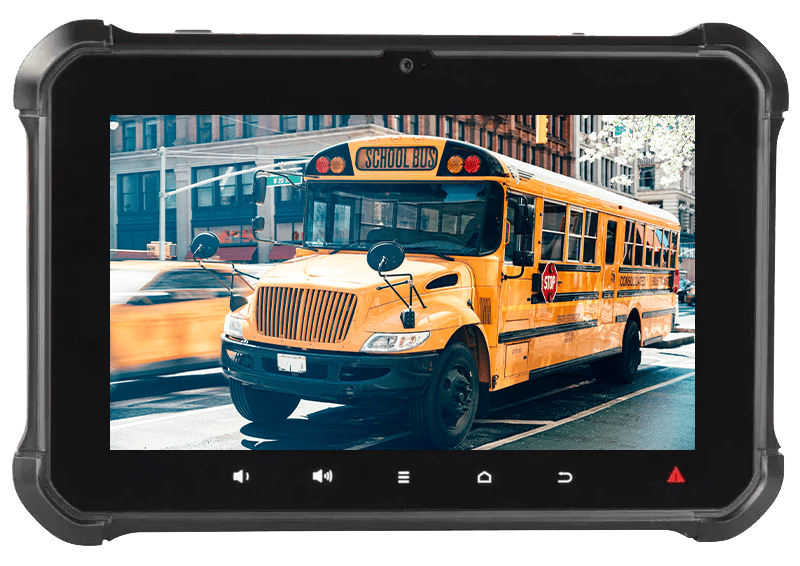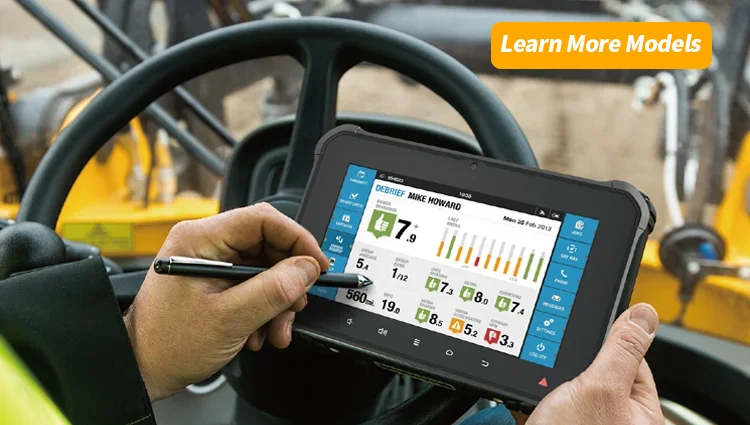Home > Blog > How to Choose a Rugged Tablet for School Buses
How to Choose a Rugged Tablet for School Buses
Time: 2025-02-11 Editor: Hitekon Rugged Vehicle Tablet Rugged Vehicle Tablet Manufacturer
I. Introduction
In the realm of school transportation, ensuring the safety and efficiency of school buses is paramount. School buses face numerous challenges, including harsh weather conditions, long routes, and the need for constant monitoring. Rugged tablets have emerged as a vital tool to address these challenges, offering durability, connectivity, and advanced features tailored for fleet management. This comprehensive guide aims to help school districts choose the right rugged tablet to enhance their school bus operations.

II. Key Features to Look for in Rugged Tablets for School Buses
When selecting a rugged tablet for school buses, several key features should be prioritized:
Durability and Ruggedness School buses operate in demanding environments, making durability a top priority. Tablets should be MIL-STD-810G certified and have an IP65 or higher rating to withstand drops, vibrations, and extreme temperatures. Reinforced frames and rugged designs ensure the tablet can handle the rigors of daily use.
Battery Life Long battery life is essential for school buses that operate on extended routes. Tablets with 10-15 hours of runtime ensure uninterrupted use throughout the day. Look for models with user-replaceable batteries to extend the device’s lifespan.
Display Quality A high-quality, daylight-readable display is crucial for drivers to access information clearly, even in bright sunlight. Displays with 1920 x 1200 resolution or higher provide clear visuals and are easier to read.
Connectivity Options Efficient communication is vital for fleet management. Ensure the tablet supports 4G LTE, Wi-Fi, and Bluetooth for real-time data transmission. GPS integration is also essential for accurate tracking and navigation.
Security Features: Protecting sensitive data is a priority. Look for tablets with military-grade security software and biometric authentication options to prevent unauthorized access.
III. Benefits of Using Rugged Tablets in School Buses
Rugged tablets offer several benefits that make them indispensable for school bus management:
Enhanced Safety and Monitoring Real-time GPS tracking and monitoring ensure that buses stay on schedule and drivers adhere to safe driving practices. Alerts for road hazards and mechanical issues contribute to a safer driving environment.
Improved Communication and Coordination Rugged tablets enable seamless communication between drivers and dispatchers, allowing for quick updates and efficient coordination. This ensures that any issues can be addressed promptly, minimizing delays.
Cost-Effectiveness and Long-Term Savings While the initial investment may seem high, rugged tablets reduce downtime and maintenance costs. Their durability ensures a longer lifespan, providing significant long-term savings.
Ease of Use and Integration User-friendly interfaces and compatibility with existing fleet management software make rugged tablets easy to integrate. This ensures that drivers and staff can quickly adapt to using the new technology.
IV. Top Rugged Tablets for School Buses in 2025
Several rugged tablets stand out as top choices for school buses:
Samsung Galaxy Tab Active4 Pro This tablet features a 10.1-inch LCD screen, 64GB or 128GB storage, and 4GB or 6GB RAM. It is MIL-STD-810G compliant and IP68 certified, making it highly durable. The user-replaceable battery ensures long runtime and extended use.
Dell Latitude 7230 Rugged Extreme Tablet The Dell Latitude 7230 offers a 12-inch outdoor-readable touchscreen with 1920 x 1200 resolution. It is IP65-rated and can withstand drops and extreme temperatures. The tablet also supports FirstNet Ready, ensuring priority access to high-capacity LTE networks.
Getac T800 The Getac T800 is a compact yet powerful solution with a sunlight-readable display and customizable storage options. It is MIL-STD-810H certified and IP65 rated, ensuring durability in challenging conditions.
Panasonic Toughbook CF-33 Known for its exceptional durability, the Toughbook CF-33 features a 12.0-inch QHD display and 1TB OPAL SSD. It is powered by an Intel Core i5 processor and includes dual batteries for extended use.
Waysion q777 The Waysion q777 is designed specifically for fleet management, offering a 7-inch daylight-readable display and Android 11 OS. It supports 4G LTE and Wi-Fi, making it ideal for real-time data transmission.
V. Real-World Data and Case Studies
Several school districts have reported significant benefits from using rugged tablets:
Case Study: School District A Reduced downtime by 30% through real-time diagnostics. The ability to quickly identify and address vehicle issues minimized delays and improved overall fleet efficiency.
Case Study: School District B Improved fuel efficiency by 15% with optimized routing. Real-time data access allowed for better route planning, reducing fuel consumption and operational costs.
VI. Future Trends in Rugged Tablets for School Buses
As technology advances, rugged tablets are evolving with new features and capabilities:
Advancements in Technology Future rugged tablets will include AI-powered analytics for predictive maintenance and route optimization. These capabilities will enable fleet managers to make more informed decisions and improve overall fleet performance.
Integration with AI and IoT Rugged tablets will increasingly integrate with AI and IoT to provide real-time insights and automation. This will enhance safety, efficiency, and overall operational performance.
Enhanced Security Measures With the rise in cyber threats, future tablets will feature enhanced security measures, including biometric authentication and end-to-end encryption. This ensures that sensitive data remains protected at all times.
VII. Conclusion
Rugged tablets have become an essential tool for modern school bus management, offering numerous benefits and features tailored to the needs of fleet operations. By prioritizing durability, connectivity, and security, school districts can equip their drivers with the tools needed for success. Investing in the right rugged tablet, such as the Samsung Galaxy Tab Active4 Pro, Dell Latitude 7230, Getac T800, Panasonic Toughbook CF-33, or Waysion q777, can significantly improve bus safety, efficiency, and overall operational performance. We encourage school districts to explore these options and choose a rugged tablet that meets their specific needs.
Previous: Rugged Tablets: The Essential Tool for Fleet Management
Next: The Ultimate Guide to Rugged Android Tablets for Industrial and Outdoor Use
Copyright © 2025.Hitekon Rugged Vehicle Tablet All rights reserved.
Public Transportation, Taxi Dispatch, Mining, Forklift Safety, Fleet Management, Precision Agriculture





